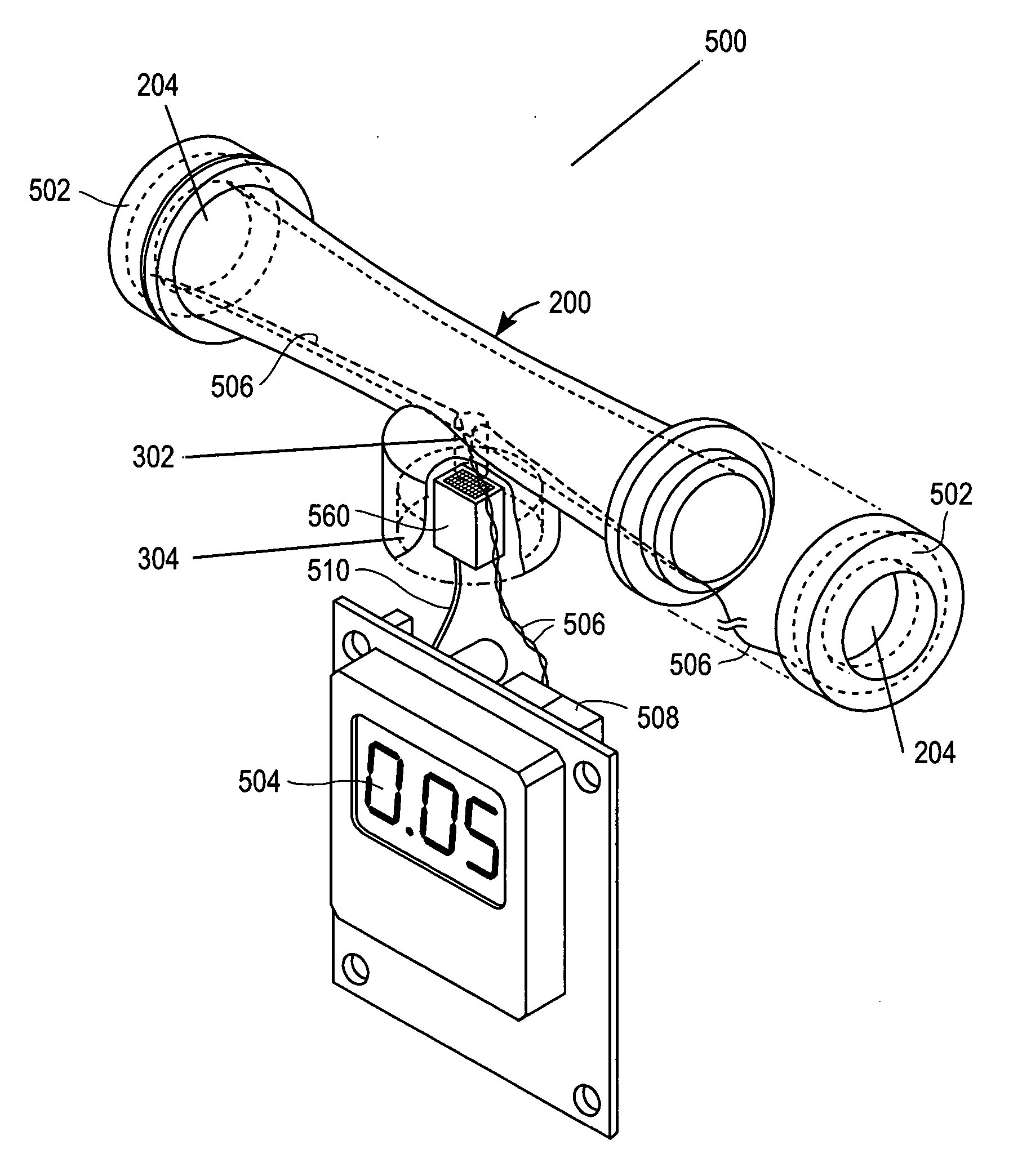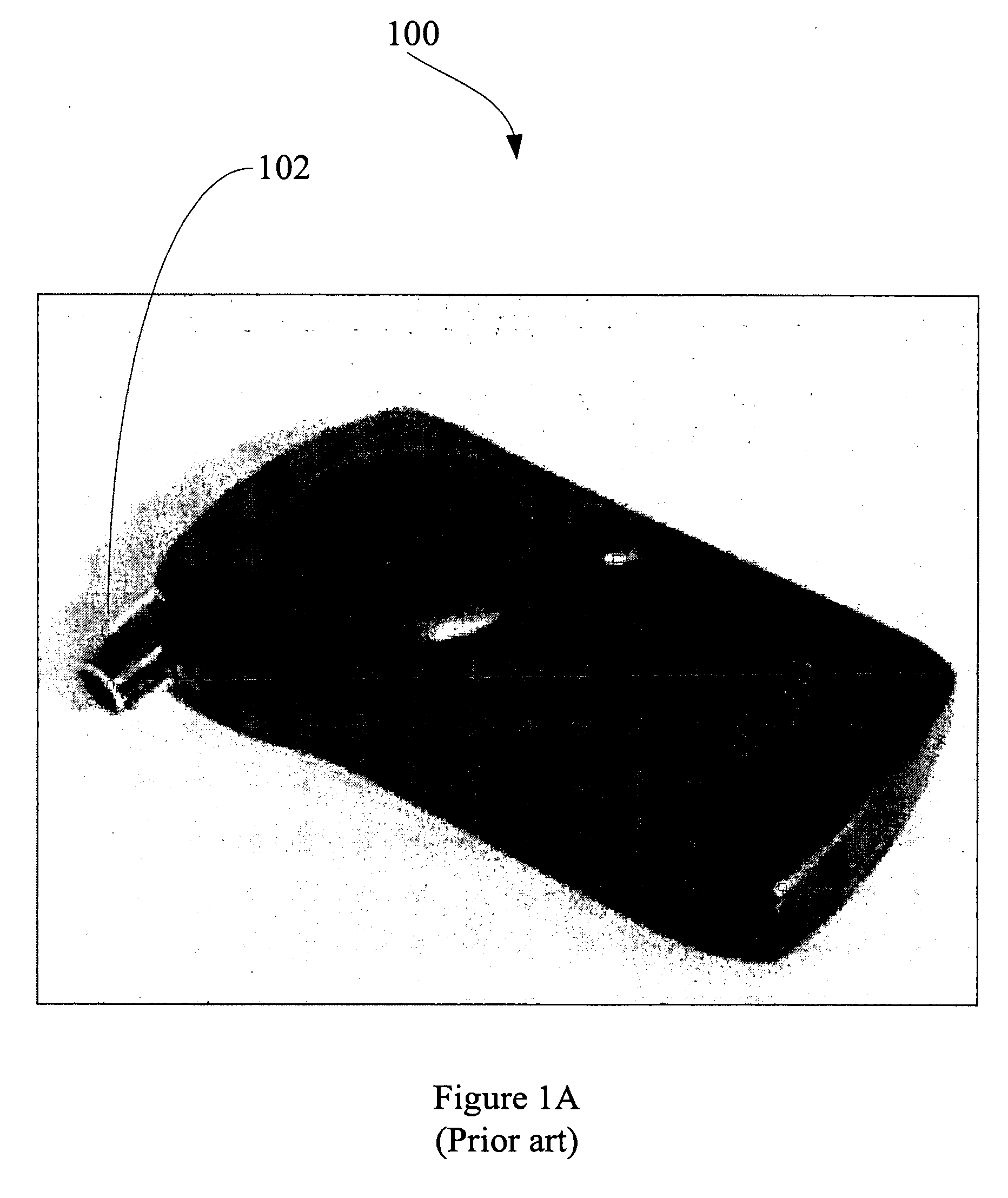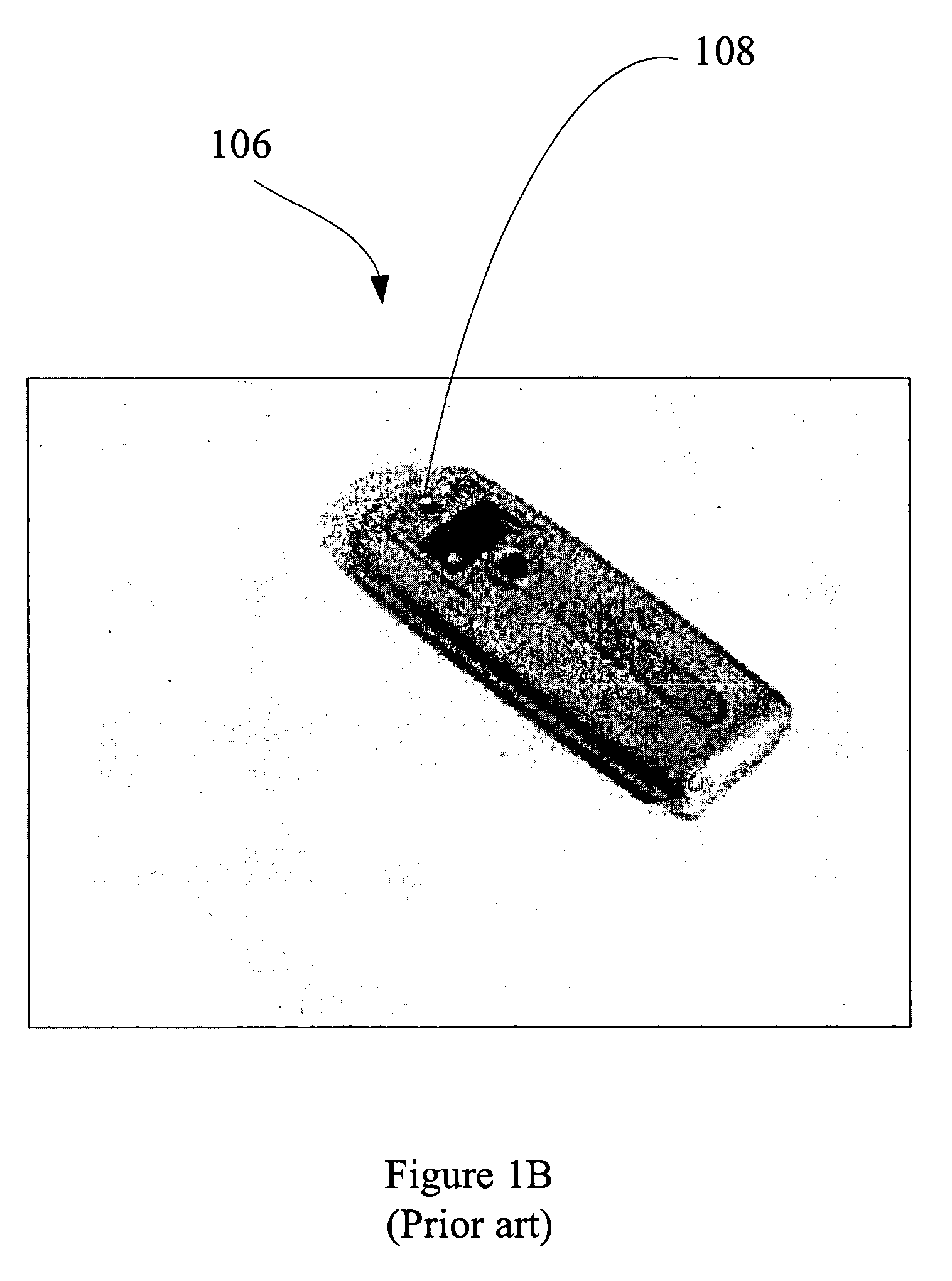Dual entry collection device for breath analysis
a collection device and breathalyzer technology, applied in the field of new breathalyzers and new methods for breath collection and analysis, can solve the problems of inconvenient use, inability to accurately measure, and inability to accurately measure, and achieve the effects of improving sanitation, rapid use by multiple users, and accurate measuremen
- Summary
- Abstract
- Description
- Claims
- Application Information
AI Technical Summary
Benefits of technology
Problems solved by technology
Method used
Image
Examples
Embodiment Construction
[0028] An apparatus in accordance with the present invention overcomes the disadvantageous features of existing breath analyzing apparatuses by introducing a dual entry collection device for more accurate, compact, convenient and sanitary use. In some embodiments, illumination features are added to the collection device in order to provide visual instruction on where to blow, when to blow into the apparatus, for how long to blow, and to inform the user of the outcome of the breath analysis.
[0029]FIG. 2 shows a perspective view of one embodiment of a breathalyzer collection device 200 in accordance with the present invention. The breathalyzer collection device 200 comprises dual entry 204 into a collection tube 202. It will be appreciated that both entries 204 are in fluid communication with each other. When a breath sample is introduced into first entry 204, residual ambient air or excess breath exits the opposing entry. Thus, each entry 204 also serves as an exit. The dual entry a...
PUM
 Login to View More
Login to View More Abstract
Description
Claims
Application Information
 Login to View More
Login to View More - R&D
- Intellectual Property
- Life Sciences
- Materials
- Tech Scout
- Unparalleled Data Quality
- Higher Quality Content
- 60% Fewer Hallucinations
Browse by: Latest US Patents, China's latest patents, Technical Efficacy Thesaurus, Application Domain, Technology Topic, Popular Technical Reports.
© 2025 PatSnap. All rights reserved.Legal|Privacy policy|Modern Slavery Act Transparency Statement|Sitemap|About US| Contact US: help@patsnap.com



